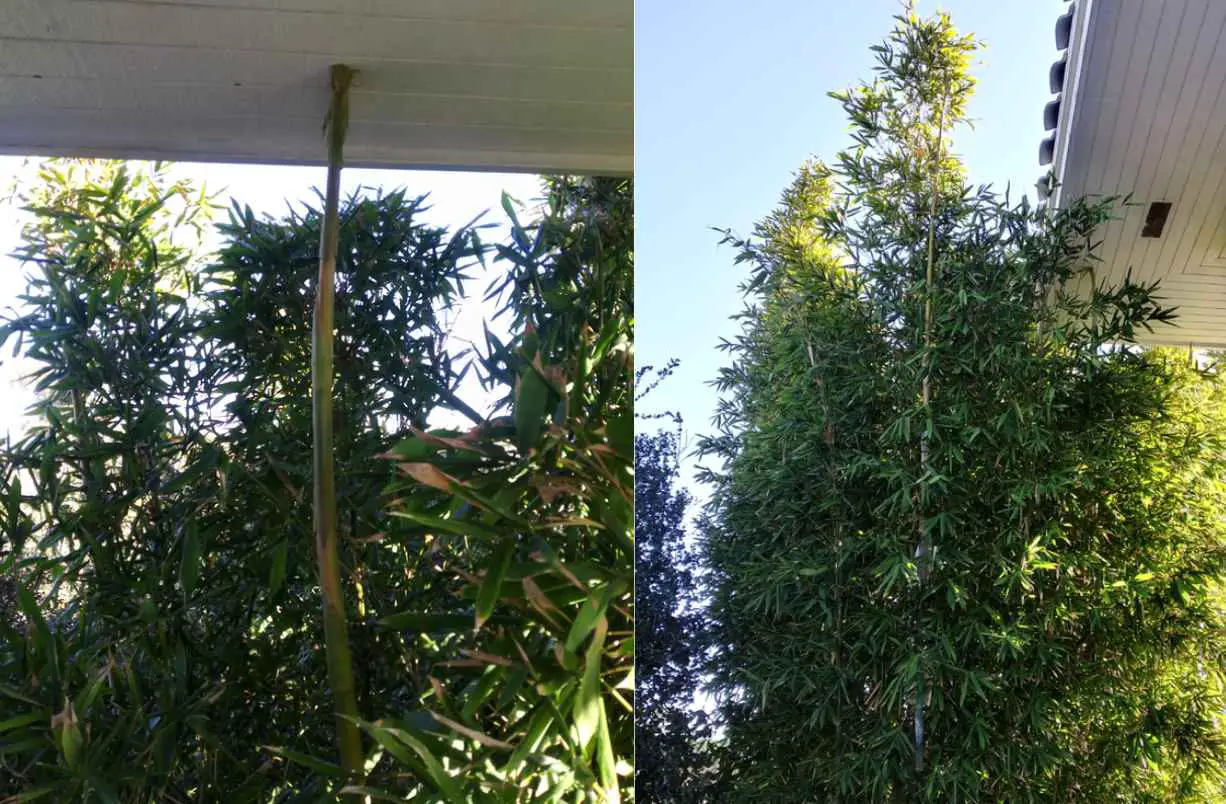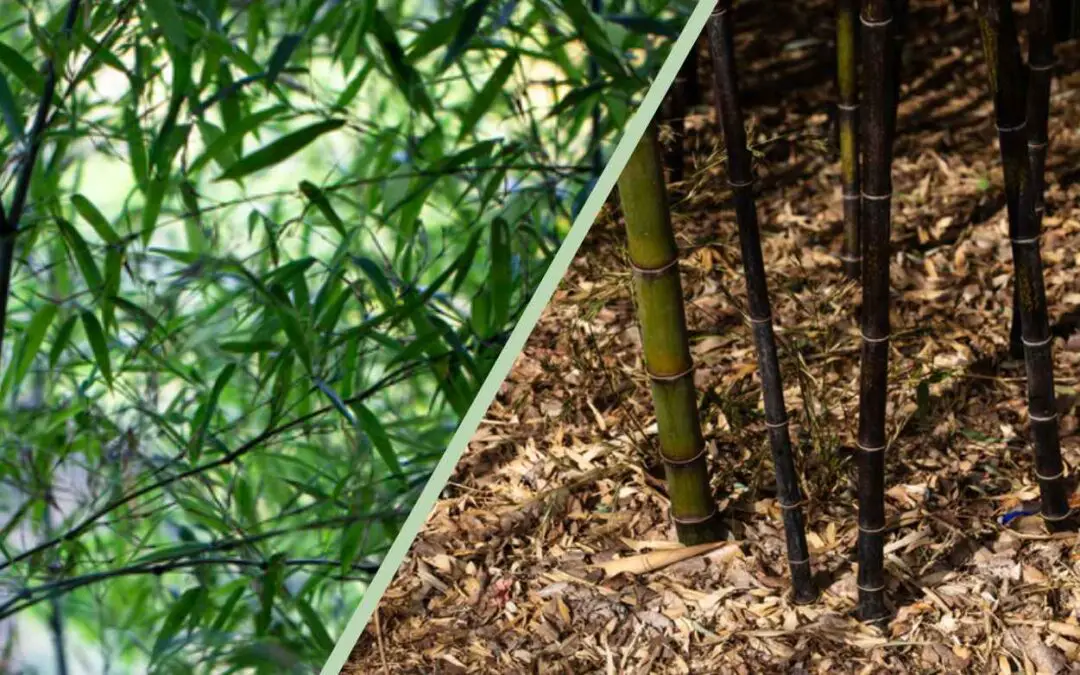Bamboo is an astonishing plant with nearly unlimited potential. Its towering culms can stretch to unthinkable heights. The poles can sway in the breeze and knock hypnotically. The graceful leaves and majestic stature even rival the magnificence of an Asian temple. But bamboo can also spread with notorious tenacity. To keep it from getting entirely out of control, it’s important to prune your bamboo once in a while.
Pruning bamboo requires some special technique, because it’s a grass, and behaves differently from a tree or a shrub. It is not terribly difficult, but like anything else in the garden, it does take a little work to maintain optimal health and appearance. To keep the bamboo looking clean and elegant, you’ll want to thin out the old wood periodically. This means removing the older culms and cutting back some of the lower branches. It’s also necessary to prune the bamboo roots to keep the plant from spreading too aggressively. And in some cases, you might also want to cut the tops of the bamboo canes.
In the following article, we’ll talk about some of the strategies to consider when pruning ornamental bamboo. When done properly, a good pruning can make your bamboo look a whole lot better. It will also improve the plant’s health and protect the rest of your garden from bamboo’s vigorous growth habit. Keep in mind, this advice is for ornamental bamboo. Maintaining bamboo in a commercial farming situation will be somewhat different, although many of the same principles apply.
Basic tools for pruning bamboo
Before you get started, you should be sure to have a few basic tools. Most of these are ordinary tools that any gardener probably has on hand.
- Small handsaw, with a narrow blade to get into tight spaces and cut back thick, woody culms
- Manual branch cutter, for medium-sized culms, 1-2 inches thick
- Handheld pruning clippers, or secateurs, for clipping thin branches or roots, less than 3/4 inch thick
- Manual hedge shears, for shaping a hedge or cutting back overgrown foliage
- For extreme root pruning and removal, a reciprocating saw may be helpful
Be sure to check our detailed article on the Best tools for bamboo gardeners.
Thinning out an overgrown bamboo plant
Bamboo tends to be a relatively low-maintenance plant that remains pretty attractive in most conditions. But years of neglect can lead to an overgrown specimen, filled with rotting and unseemly bamboo stalks. Restoring the unkempt bamboo to its natural beauty is a fairly straightforward and rewarding task.
You’ll want to start by manually removing any dead, dried out or cracked poles. Usually, the oldest poles will also be the thinnest, so you should look for those as well. Simply use the small handsaw or branch cutters — depending on how crowded they are — and then cut the unwanted poles as low and close to the ground as possible.
If you have poles leaning sideways, rather than growing upright, you should remove most of them. But you can leave one or two leaners here and there, as they will provide support for some of the others. The contrast of the occasional leaner can also add some visual interest among the long rows of vertical poles. It could produce a desirable effect in some cases, but sometimes not.
Once the old and less attractive culms are removed, the plant should already look a whole lot better. It should also feel much better. The weak and decrepit growth just drains energy from the plant. So with them out of the way, the bamboo will have that much more energy to put into fresh, healthy shoots in the upcoming growing season.
When to prune the bamboo
Famously resilient, bamboo can withstand a good, hard pruning almost any time of year. But for best results, bamboo pruning should take place in the dormant season, when you don’t see any active, new growth. Depending on your climate, you may have a couple of dormant periods, or you might just have a long winter. Late fall or late winter will probably be the best.
Removing excessive biomass, like the old, languishing canes, allows the bamboo to concentrate its energy in the more important parts of the plant. Doing this in the late autumn can help strengthen the bamboo as you approach a long winter. And by pruning before the growing season begins, the bamboo is primed to produce a vigorous wave of new shoots.
If you have an old bamboo grove, more than about 10 years old, and it’s never been well-maintained, then the best time to prune it is right away. Maybe you bought a piece of property with some old bamboo, and it’s looking overgrown and unattractive. Don’t be afraid to dive in and cut out all the old, withering canes and sprawling branches. New growth will soon follow, and it will look far more healthy and vibrant.
Pruning the branches and leaves
Depending on the variety of bamboo and your vision for your garden, there are some different ways to approach the pruning of leaves and branches. Cutting back the lowest branches, below three or four feet high, can produce a very interesting effect. It will really show off the culms of the bamboo, which is especially desirable with striped varieties like Bambusa multiplex ‘Alphonse Karr’ or Bambusa nana striata ‘Candy cane bamboo’, and with unusually shaped species like Square Bamboo (Chimonobambusa quadrangularis) and Buddha’s Belly.
Keeping the lower branches pruned also makes it easier to perform other maintenance, like mulching and inspecting the roots. This kind of pruning you only have to do once a year with some handheld secateurs. Always snip the branches as close to the main stem as possible. If you only cut off the end of the branch, you’ll probably begin to see a lot of new growth at the nodal joints, and it’s not usually very attractive.
If you’re growing bamboo as a hedge or a privacy screen, you may want to keep the leaves pruned evenly on the sides. You can easily do this with some larger pruning shears. And you might have to trim the leaves back a couple times a year, depending on the species, the climate, and your personal preference.
Topping the bamboo
Pruning the tops of the bamboo is generally not necessary, except in a couple of special cases. If you have a hedge, for example, and you like to keep it level and even across the top, you may want to prune it down. But it’s normally better to let the culms grow to their full height. So if possible, pick a bamboo that fits with your size parameters before planting it. Then, when you prune, you’ll just be cutting back the leaves and some of the lateral branches.
In other cases, you might discover that the bamboo you planted is just too tall. The poles could be running up against the eaves of the house, disrupting tiles and rain gutters, or even pressing up against the bottom of an upper deck or balcony. (See the Bambusa oldhamii in the photo below.)

If this starts to happen, you’ll need to top your bamboo shoots in order to protect your property. Once you top the shooting culm, it will stop growing upward. Lateral branches will still appear, and they usually grow up at about a 45-degree angle, depending on the variety. Thinner than the primary culms, the branches won’t pose such a threat to your house. But you’ll still need to keep an eye on them.
Most of the time, it looks better to remove those excessively tall poles altogether, sawing them off at ground level. Topping a bamboo culm will promote lots of lateral growth, abundant branching at the nodes. If you want a dense privacy hedge, this might be desirable. But specimen plants with tall, elegant culms tend to look better without so much branching.
Pruning the bamboo roots
We said that bamboo is relatively low maintenance, but if you have a running variety, then pruning the roots could be a very important chore. You’ll want to poke around in the soil and inspect the roots a few times a year, but you probably only need to prune them once a year. Depending on your bamboo and your soil type, you can usually do this with some small secateurs. But you may end up needing something stronger.
To make this task easier, a lot of bamboo growers will dig a trench around their bamboo so they can see when the roots have reached the perimeter. Another popular and effective method is to bury a rhizome barrier around the plant. This will protect you and your neighbors from a potentially invasive bamboo that could really get out of control.
Finishing touches
Once the bamboo is pruned back to its desired state of pristine beauty, you can add a fresh layer of mulch around the base of the plant. This always gives the garden a fresh, clean look. And it’s great for the bamboo as well. Mulching is an excellent way to insulate the roots, helping them to retain moisture when it’s dry and windy. And in colder climates, mulch provides essential warmth and protection in the winter.
You can use any combination of bark, wood chips, straw and leaves. The leaves of the bamboo itself are also a great additive, so no need to bother raking those away from the plant.
Once in a while, it’s also nice to give the bamboo a good shower. Spray it down with a little pressure from the garden hose, and this will help to clean the leaves and the culms and make them shine a bit more. It can also deter insects and other pests. Just don’t do this under intense direct sunlight, as the sunshine through the water droplets can leave burn marks on the leaves.
Further reading
If you enjoyed this article about how to prune and beautify your bamboo, please consider sharing the blog post or subscribing to our mailing list. You might also be interested in some of the following links:


























Well done, Bambu Batu
And thank you for taking time to document such information
It has been really helful